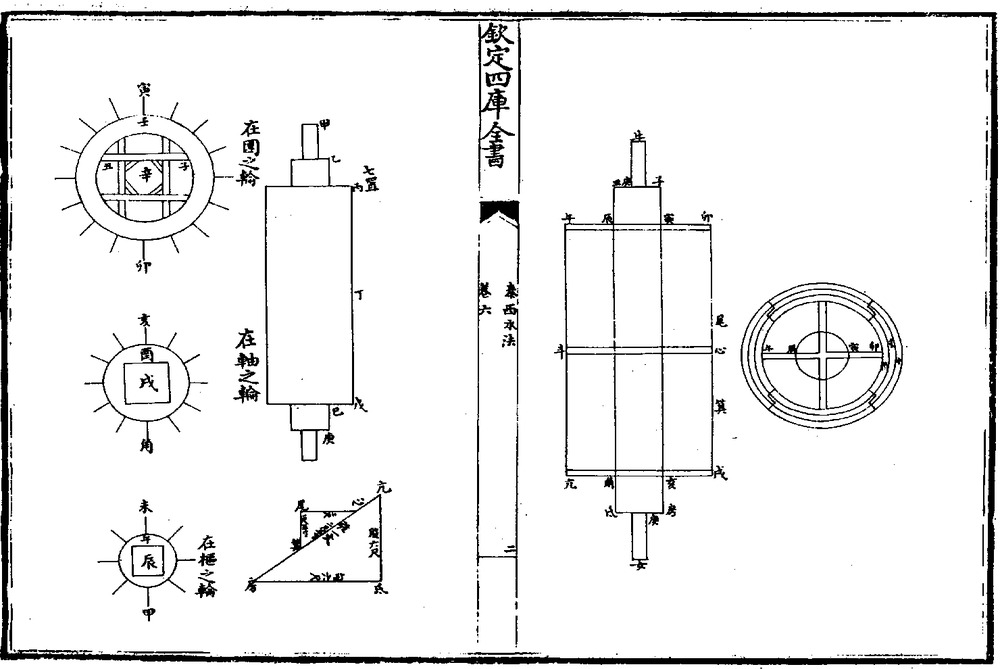Taixi shuifa 泰西水法 "Hydromethods of the Great West" is a handbook on water-related techniques and questions written during the late Ming period 明 (1368-1644) by the Italian father Sabatino de Ursis (Chinese name Xiong Sanba 熊三拔, 1575-1620), who in 1606 came to China as a Jesuit missionary. He stayed in Beijing among the entourage of Father Matteo Ricci (Li Maodou 利瑪竇, 1552-1610), from whom he learned Chinese.
The book, with a length of 6 juan, was composed with the help of Xu Guangqi 徐光啟 (1562-1633), who, together with Ricci, also wrote a book on Western geometry (Jihe yuanben 幾何原本, based on Euclid's Elements) and the agricultural encyclopaedia Nongzheng quanshu 農政全書. He also compiled a treatise on calendrical astronomy, Chongzhen lishu 崇禎曆書.
The first two fascicles of the Taixi shuifa describe the function, structure and usage of several types of waterwheels and other water-lifting devices. The text introduces the so-called "dragon-tail pump" (longweiche 龍尾車, with the mechanism of Archimedes' screw) that draws water from a river. The second chapter introduces the "jade balance-beam pump" (yuhengche 玉恒車, the piston pump of Ctesibius) and the "continuous [water]-rise pump" (hengshengche 恒升車). Here, short information is appended about the "single-tube pump" (zhuantongche 專筒車) and the "double [continuous water]-rise pump" (shuangshengche 雙升車).
The third chapter is dedicated to the construction of water reservoirs. The fourth fascicle, called "further [information] about hydromethods attached" (Shuifa fuyu 水法附餘), expounds methods to detect underground watercourses for the digging of wells and discusses the use of "medicinal dews" (yaolu 藥露) and hot springs to prevent and treat diseases. Chapter 5 is an Aristotelian discourse on the nature and properties or "principles" of water (shuili 水理). The last part of the book includes the images of the various water tools described in the text.
 |
The illustrations show the enclosure surrounding shaft and helix of the Archimedean screw, and the different options for applying a driving mechanism to it. The Heavenly stems and earthly branches characters serve as numerical references to link up text and illustrations. In these technical drawings the focus is clearly on design and working mechanism of the device. Siku quanshu 四庫全書 edition. |
The Taixi shuifa introduced ancient Western knowledge to China, and due to its combination of scientific explanations with practically applicable techniques, it stands out among traditional Chinese books on the use of water resources. However, all mechanical devices described in the text failed to replace traditional Chinese tools in agriculture or mining.
The book was finished in 1612. The Saoye Shanfang Studio 掃葉山房 reproduced this print as a facsimile. The text is also appended to the standard editions of the Nongzheng quanshu. It is part of the series Tianxue chuhan 天學初函 (1626), which is reprinted in the series Zhongguo shixue congshu 中國史學叢書, and is also found in the imperial series Siku quanshu 四庫全書.